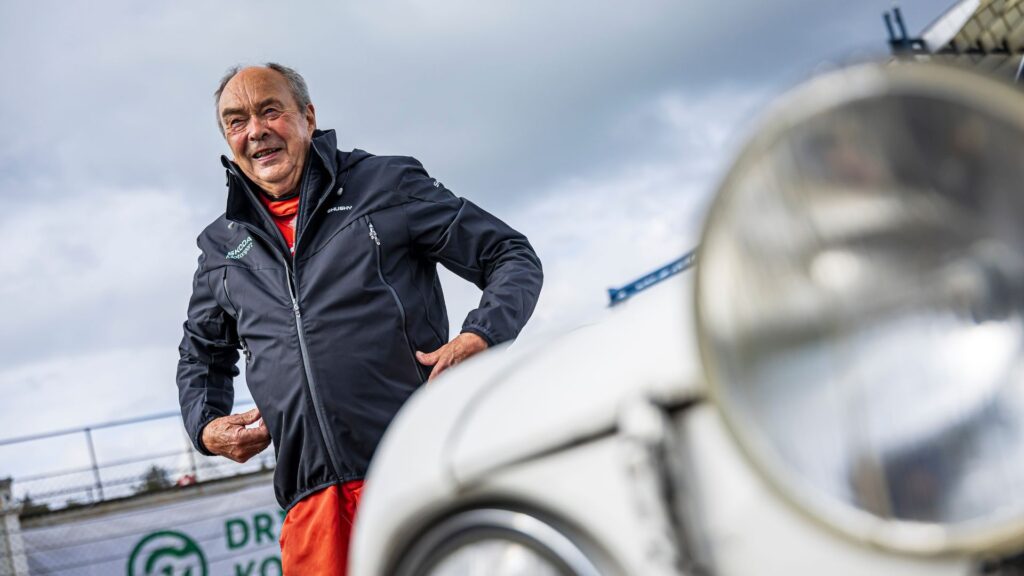Škoda’s motorsport legacy is nearly as old as the brand itself. But in the world of modern
rallying, it was exactly fifty years ago that the carmaker established itself as a serious
contender—with the legendary Škoda 130 RS. Today’s state-of-the-art rally cars still build on this rich tradition. Drivers John Haugland and Andreas Mikkelsen reflect on five decades of rally success, behind the wheel of both the 130 RS and its modern successors.
Although Škoda cars from Mladá Boleslav were already winning races back when the Laurin &
Klement brand began building motorcycles, it was fifty years ago that Škoda cemented its
reputation in international rallying. “It all started in 1975 with the Škoda 130 RS. The car was so
good, it even scored points in the overall World Rally Championship standings,” says rally driver
Andreas Mikkelsen.
The very first world championship point for the 130 RS came from the 1977 Rally 1000 Lakes in Finland, thanks to then Škoda Motorsport works driver John Haugland. He finished 10th overall—outpacing many more powerful cars. On gravel, the 130 RS continued to impress: Miloslav Zapadlo scored points in 1978, and Václav Blahna did so in both 1979 and 1981 at the gruelling Acropolis Rally in Greece.
According to John Haugland, the 130 RS truly shone on tarmac: “It was an outstanding asphalt car—very stable, with excellent grip. We achieved great results with it,” he recalls. Still, gravel stages often levelled the playing field, diminishing the performance gap between vehicle classes. That’s where the 130 RS proved it could hold its own against much stronger competition with the higher class specials.



"Driving this car is truly a wonderful experience. But you really have to work for it – you need to grab the wheel firmly; compared to modern cars, the steering is quite heavy. Still, it gives you an amazing feeling," says Andreas Mikkelsen after a short ride in the legendary rally machine, with J. Haugland in the co-driver’s seat.
Škoda 130 RS Achievements
1977: 1st and 2nd in class – Rallye Monte Carlo
1978, 1979, 1981: Class wins – Acropolis Rally
1981: Overall victory – European Touring Car Championship
The success of the 130 RS was just the beginning. Its successor, the Škoda 130 LR, soon took over rally duties. In the 1990s, it was followed by the Favorit, then the Felicia in 1995. Škoda Motorsport made its first foray into all-wheel-drive WRC competition with the Octavia WRC, and in 2003 came the Fabia WRC. A major milestone arrived in 2009 with the introduction of the Fabia S2000—Škoda’s entry into a new rally category.
This was the car that launched Andreas Mikkelsen’s career on the international stage. “In 2011 and 2012, it brought me my two Intercontinental Rally Challenge titles. That car opened the door to the world championship for me,” A. Mikkelsen recalls, noting he’ll never forget the high-revving sound of its engine.
He continued that success with the Fabia R5 (later known as Fabia Rally2). In 2017, he won the WRC2 category at Rallye Monte Carlo. In 2021, driving the Rally2 evo, he captured both the European and World Rally Championships in the WRC2 class. In 2023, he repeated his WRC2 triumph—this time in the latest-generation Škoda Fabia RS Rally2. To showcase just how far rally technology has progressed in 50 years, Mikkelsen recently took John Haugland for a ride in the Fabia RS Rally2. Haugland was clearly impressed: “It’s fantastic. The speed, the way it works, and the way you drive it—it’s really impressive.”
Škoda 130 RS and Škoda Fabia RS Rally2
| 130 RS | Fabia RS Rally2 | |
| Engine | In-line four-cylinder; 1,299 cc | In-line four-cylinder; 1,620 cc, turbocharged |
| Engine placement | Longitudinal rear | Transverse front |
| Power Output | Approx. 140 bhp | Approx. 289 bhp |
| Torque | 127 Nm | 432 Nm |
| Transmission | 4-speed manual | 5-speed manual sequential |
| Drive | Rear-wheel drive | All-wheel drive (mechanical front & rear differentials) |
| Weight | 720 kg | 1,230 kg |
| Brakes | Front discs, rear drums | Disc brakes front and rear |
| Suspension | Oddball axle front, trailing axle with triangular arms rear | MacPherson-type suspension front and rear |
| Wheels and tyres | 5.5-8 x 13 inches, 165-215/50-13, later 15 inches | 8 x 18 inches, 225/70 R18 or 205/75 R18 (tarmac) |
















